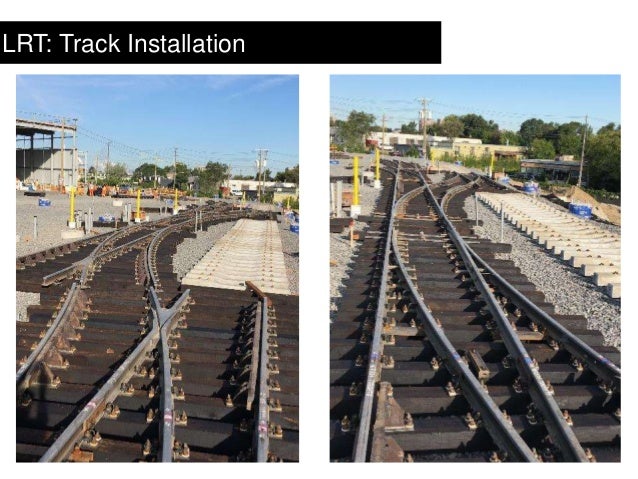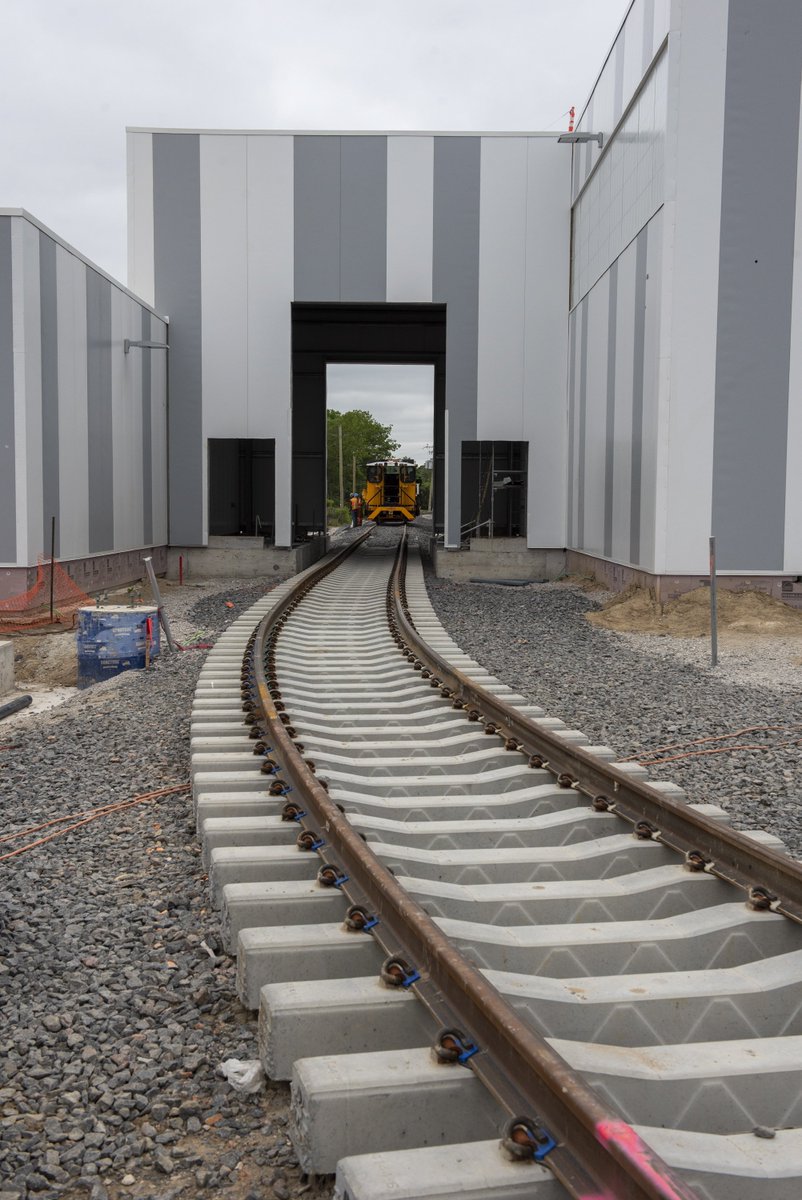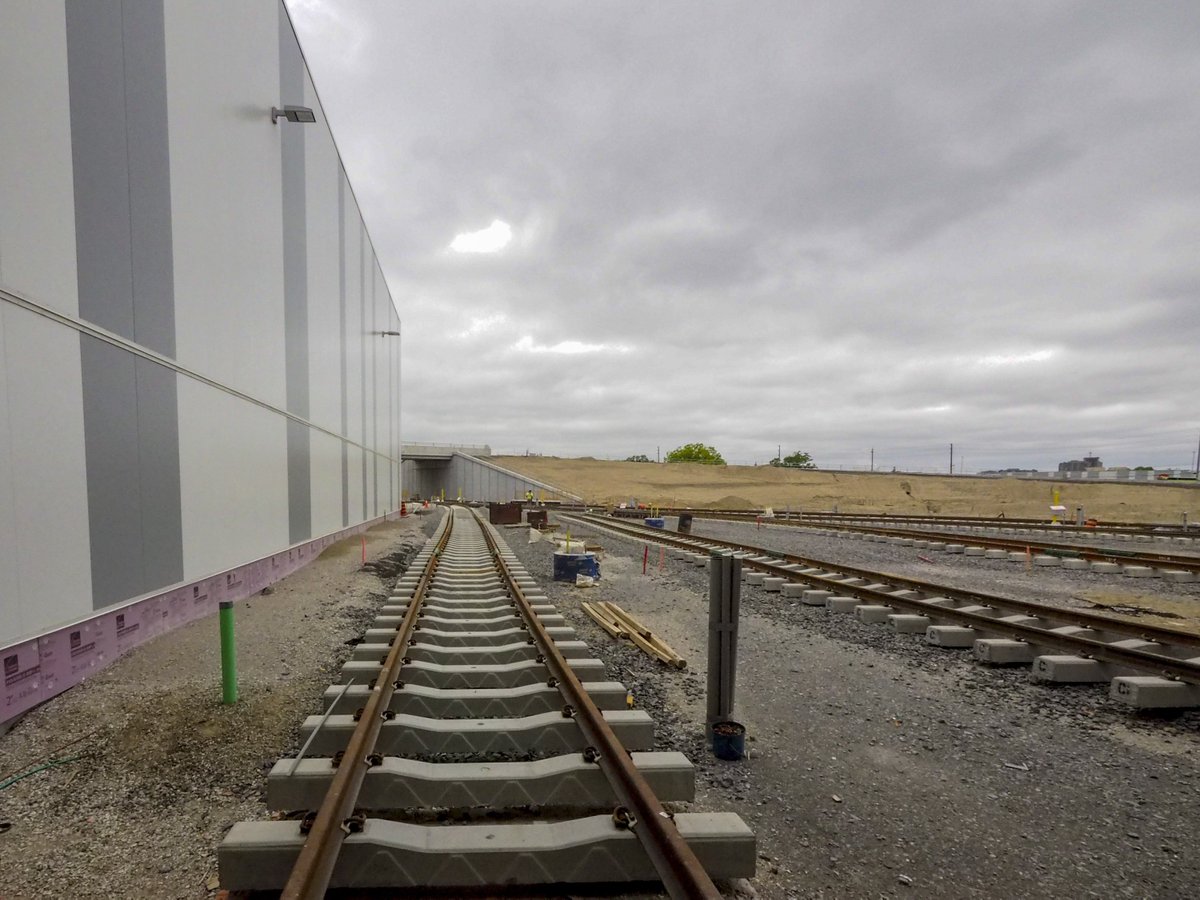Wood ties are cheap and can last well over 30 years if the track structure is maintained well. I've walked the entire Newmarket Sub from Parkdale to Barrie and there are tons of wooden ties there that date to the 30s and 40s. How do I know their age? The date nails I ripped out of them! Recent pricing I got for wood ties was $80ish per tie, delivered... They can also be installed by hand, with 2 guys and a pair of tie tongs. Concrete ties are several hundred pounds (600-700) each and installation requires mechanized assistance.
Concrete ties are likely a fair shake more expensive, though I don't have pricing on hand at the moment. They have reinforcing steel throughout and the manufacturing process is more involved because of this. They also result in a much stiffer track structure compared to wood ties, because they just don't have the same flexural properties as wood. Your subgrade and ballast better be damn good or your concrete ties are just going to snap in half the second you run trains. Metrolinx is moving toward using exclusively concrete ties, but that's another matter for another day. CN installed a bunch of ties in Northern Ontario back in the 70s/80s and a study was done on their lifespan. The basic conclusion was that they didn't last any longer than wood (often times shorter life) and not worth the extra cost. This was the "first generation" tie. The current gen ties have only been in ground for a decade, maybe two tops, and the research just isn't there yet to see how well they will fare. We need to wait another 20 years to see how things play out.
Composite ties are few and far between, at least around here from what I've seen. There are a few in place at grade crossings on the Newmarket Sub, though. I'm not sure I've seen them used elsewhere in my travels but surely they've got their time and place. The idea is that they're made of recycled material and are theoretically recyclable at EOL.
Steel ties are getting more and more popular, especially in yards. The main benefits are a fairly significant reduction in the amount of ballast required compared to track constructed with standard-sized ties and at EOL they can simply be sold for scrap metal (and turned into new ties!). No environmental waste to worry about like wood ties. Union Station has a bunch, and the new Mimico south yard that GO uses is all steel ties. Lewis Rd is all steel too. What's your source on the high water table comment? Never heard anything like that, though you are correct in that they need to be electrically isolated for track circuits to work properly. On a somewhat related note... "ballast resistivity" is a thing. Basically, it's a measure of the impedance of the ballast/track structure. The current in the rails leaks out and travels through the ties and ballast and causes all sorts of fuckery. But again, another topic for another day.
The RTA (
www.rta.org) has a pretty informative website where some interesting reading can be found, especially as it related to tie lifecycles.
Clear as mud?!







